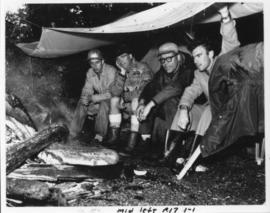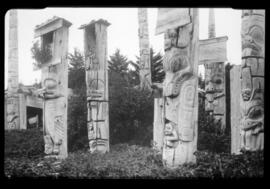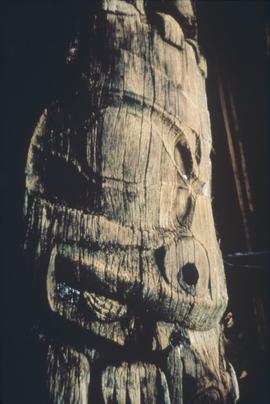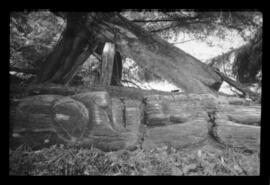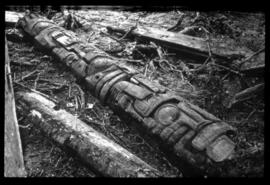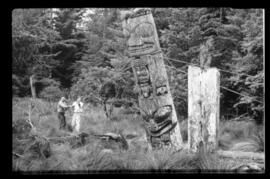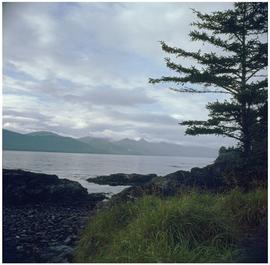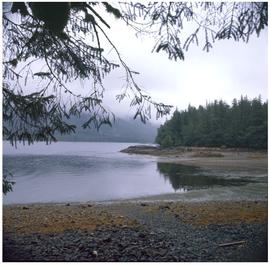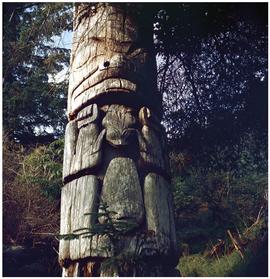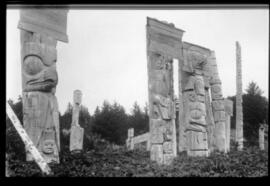- 1-5-2 (27.2)-a035183-1
- Pièce
- 1957
Fait partie de William McLennan (MOA Curator) fonds
Image of Wilson Duff, Harry Hawthorn, Bill Reid and John Smyly under a shelter on Skunnggwaii llanas (Anthony Island). The image was taken during the Ninstints expedition to retrieve 11 totem poles from the area.

